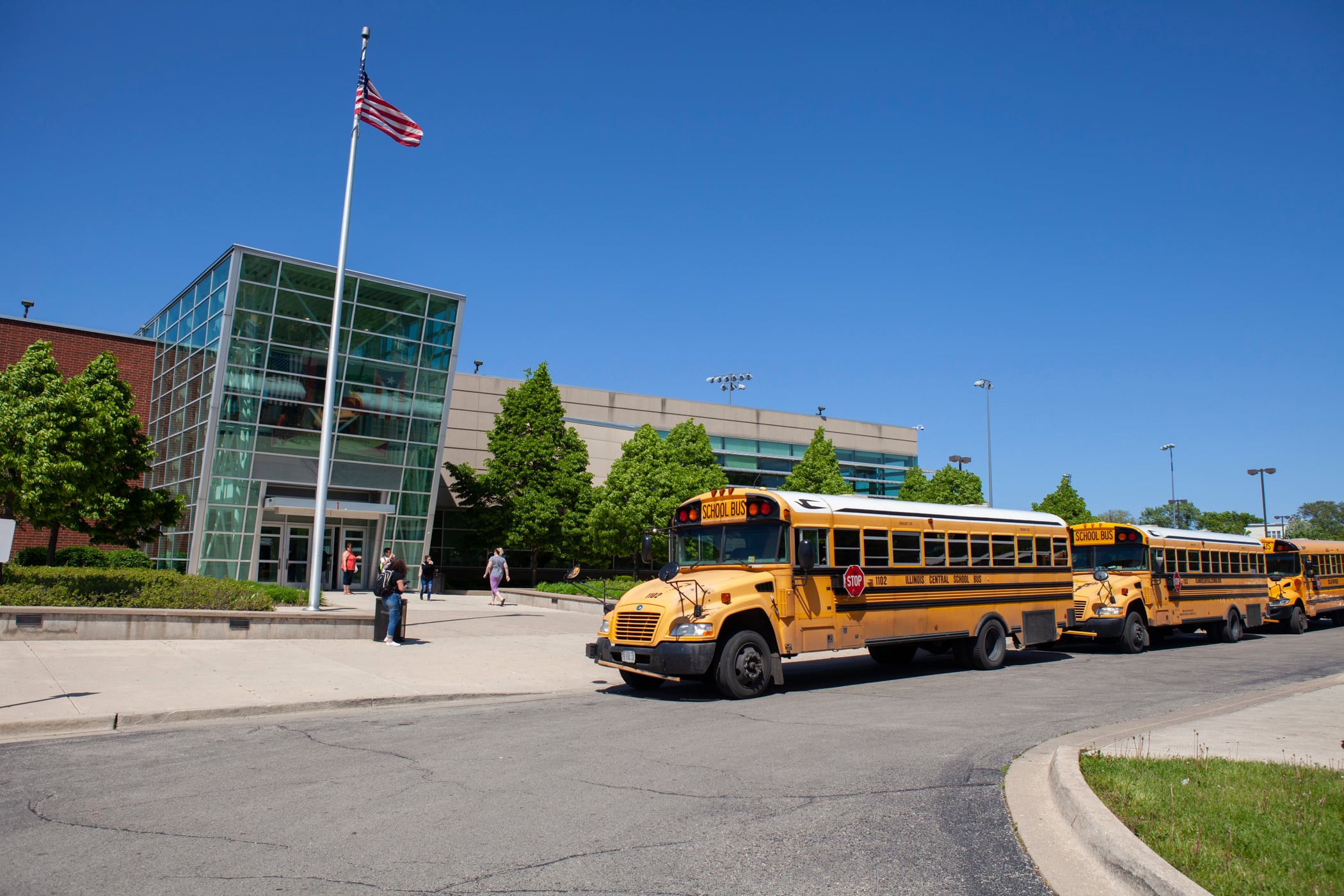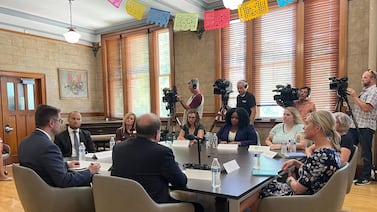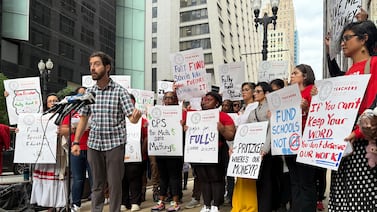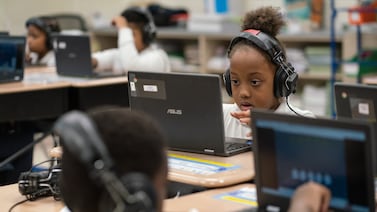Chicago Public Schools unveiled a $9.3 billion proposed budget for the coming school year Tuesday that taps into federal stimulus funding to power fall’s full reopening and chips in for repairs in the city’s aging school buildings.
The amount represents a 10% increase over last year’s $8.4 billion budget. It draws on $1 billion in federal stimulus dollars for the district’s Moving Forward Together pandemic recovery initiative and increased funding for schools as they prepare to reopen five days a week in August. Spending on facilities is down about 11% compared with last year’s budget, which itself featured more modest capital expenses than in previous years.
Officials said spending across the budget prioritizes schools in high-need communities and those hardest hit by the pandemic. The district is getting about $2.6 billion from the two latest federal stimulus packages for schools, meant to be spread out over three fiscal years — pushing its total over three federal funding infusions up to about $3 billion. Officials said they plan to spend the money over multiple years to keep initiatives such as Moving Forward Together going beyond the 2021-22 school year.
“In keeping with our commitment to equity, schools who need more will get more,” said Jose Torres, district’s interim CEO. He stepped in for former schools chief Janice Jackson eight days ago and did not work on the new budget.
Torres also said that school leaders will be able to direct additional dollars they receive to their campus needs as they prepare for a full reopening.
Besides paying for Moving Forward Together, federal dollars in this year’s budget will pay for fall student reengagement efforts and school reopening costs, including protective equipment, vaccinations, cleaning supplies and more; cover school air quality projects; and go toward hiring more special education teachers and support staff as well as expand special academic programs and early childhood classrooms.
The Chicago Teachers Union said in a statement that the budget does not go far enough to address the pressing needs brought by the pandemic and historical underfunding in some communities.
“This level of investment from the federal government should mark the beginning of ongoing sustainable funding for schools at a much higher level — the level our students and school communities need and deserve,” the union said. “The mayor should be at the forefront of advocating for sustainable school funding, and not just temporary recovery dollars.”
The budget also includes $672 million in facility spending, down from last year’s $758 million capital expenses. This year’s spending includes:
- $328.6 million for repairs at 92 schools, such as rebuilding roofs and replacing fire alarms.
- $100 million for major renovations on 17 campuses.
- $110.5 million to modernize classrooms and other school spaces, including pre-kindergarten classrooms and recreational facilities.
- $46.4 million to upgrade connectivity and other technology.
As the district announced back in the spring, it’s putting $225 million more in school budgets. Officials stressed that the district will use no federal dollars to repay its debt.
As of June 30, the district said it still owed $8.4 billion in long-term debt and another $244 million of short-term debt, so it plans to allocate $763 million — about the same as the previous year — to debt service payments. About $12 million of the interest the district is paying on its short-term debt for next school year is coming out of its operational budget for schools.
The district expects to borrow another $450 million in late fall.
After factoring out debt and capital costs, the district’s planned operating budget is $7.8 billion — of which $4.4 billion, or 58%, goes directly to schools. About $95 million will go to charter and contract schools and $204 million goes to Chicago’s part of its $950 million annual teacher pension tab.
Asked how much the district is planning to spend on its controversial contract with the Chicago Police Department, officials noted local school councils are voting on whether to keep their campus officers as part of an initiative to weigh alternatives to school police.
The district will host a series of virtual community meetings on the budget before the school board votes to approve it. Officials said they will share links to attend the events and other details in the coming days.
They will take place at 6 p.m. July 20 and 4 p.m. July 21. Hearings on the capitol budget will be at noon July 21, 2:30 p.m. on July 22, and 3:30 p.m. July 23.
To see the full proposed budget, please visit www.cps.edu/budget2022.






